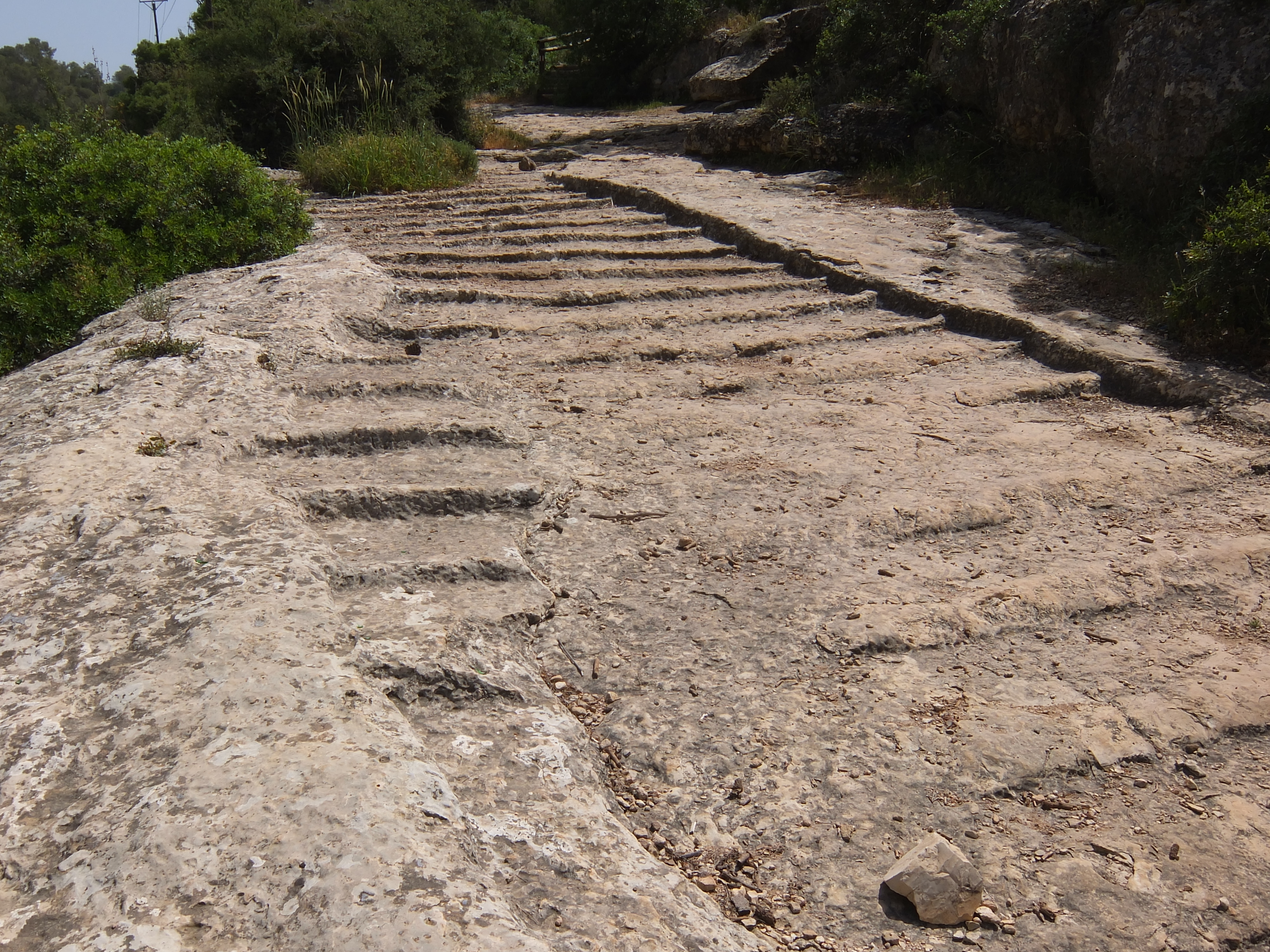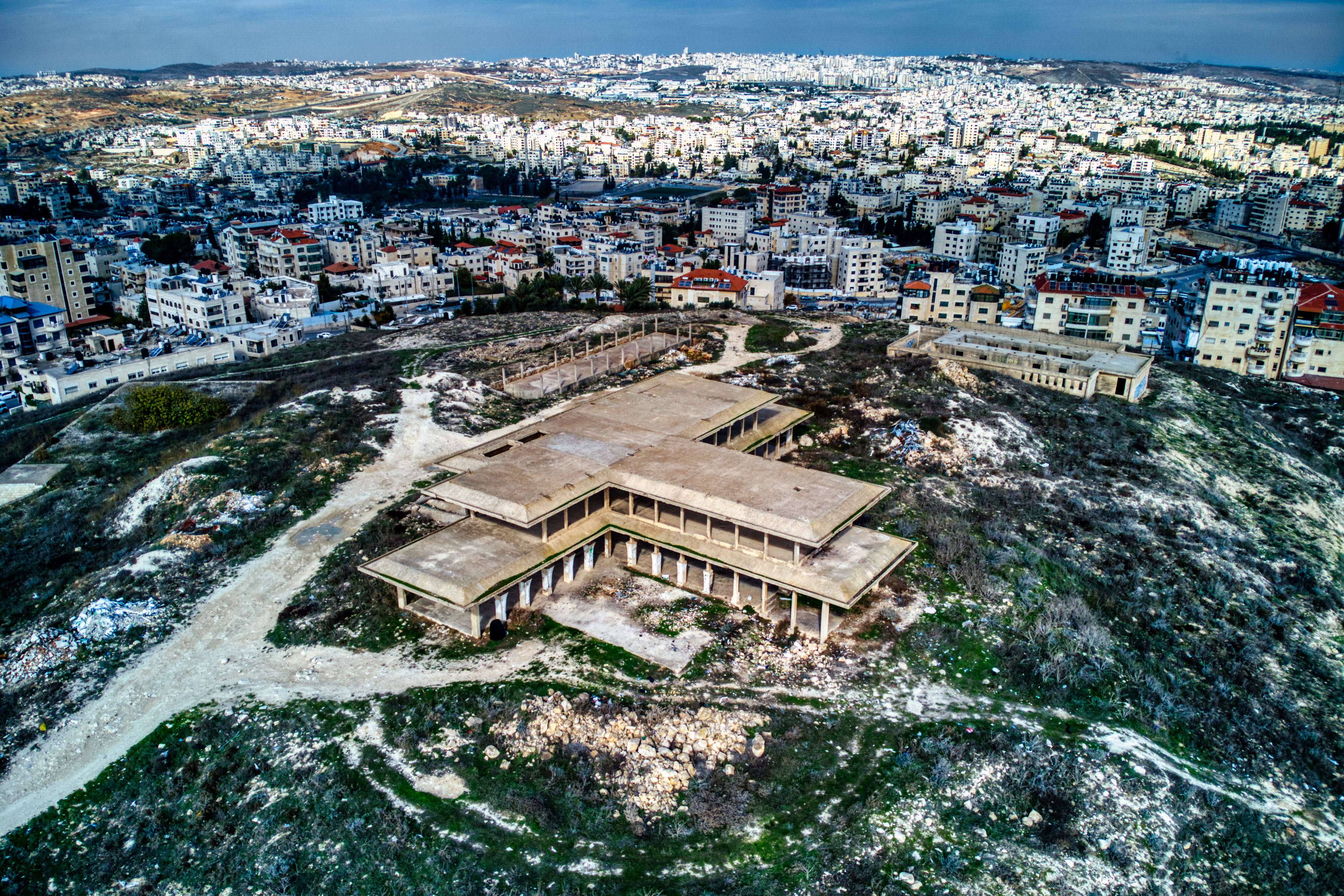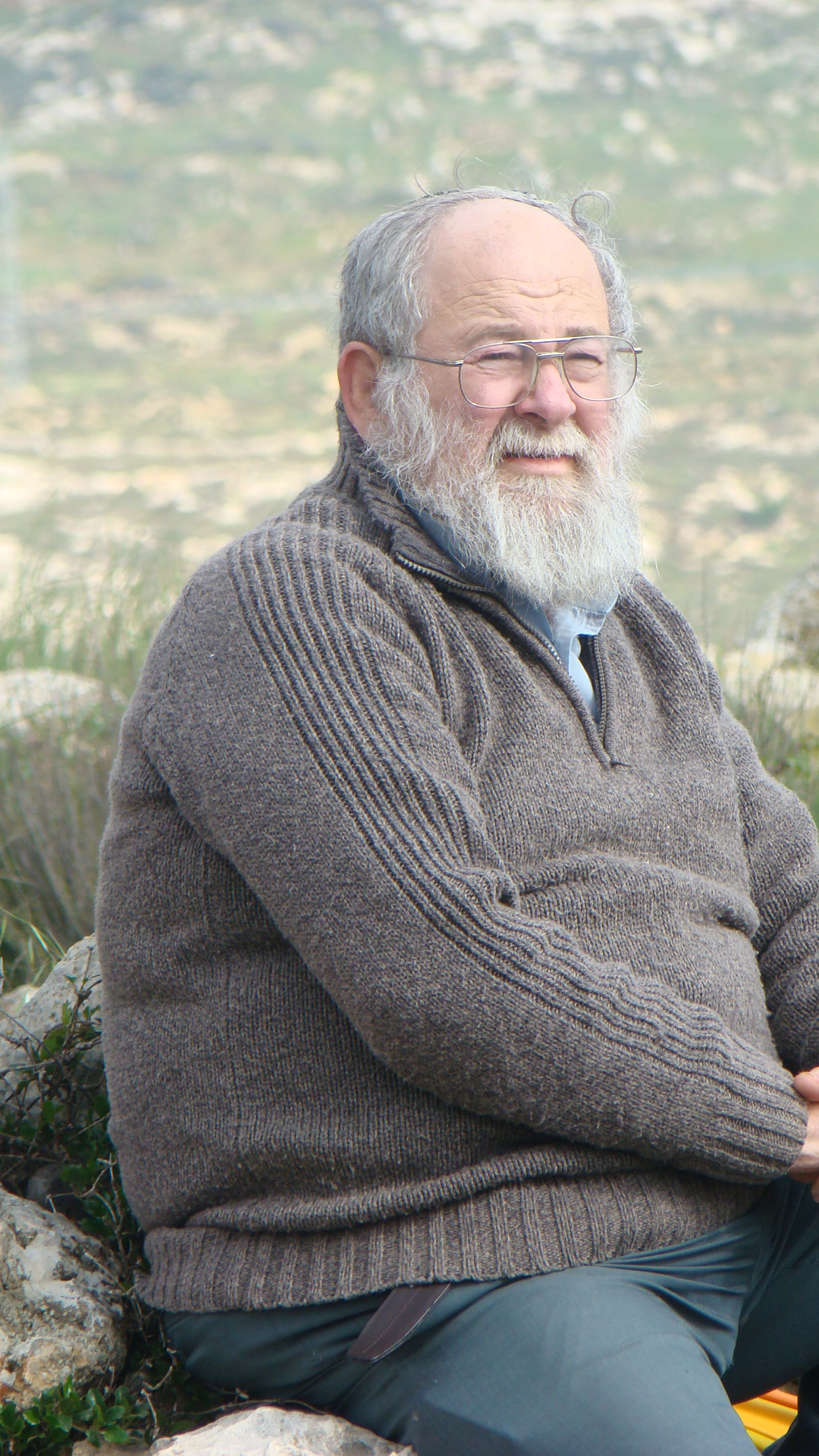|
Al Jab’a
Jab'a ( ar, الجبعة) is a Palestinian village in the central West Bank, located 17 kilometers north of Hebron and 15 kilometers southwest of Bethlehem. Located three kilometers east of the Green Line, it is located in the Seam Zone, surrounded by the Israeli settlements in the Gush Etzion Regional Council and the Israeli West Bank barrier. Nearby Palestinian towns and villages include Surif adjacent to the Jaba'a, Wadi Fukin and Nahalin to the north. It is the northernmost locality in the Hebron Governorate. According to the Palestinian Central Bureau of Statistics, Jab'a had a population of approximately 896 in 2007. British Mandate of Palestine era In the 1922 census of Palestine conducted by the British Mandate authorities, Al Jaba'a had a population of 122 inhabitants, all Muslims.Barron, 1923, Table V, Sub-district of Hebron, p 10/ref> while at the time of the 1931 census, El Jab'a had a population of 176, still Muslim, living in a total of 36 houses.Mill ... [...More Info...] [...Related Items...] OR: [Wikipedia] [Google] [Baidu] |
Arabic Script
The Arabic script is the writing system used for Arabic and several other languages of Asia and Africa. It is the second-most widely used writing system in the world by number of countries using it or a script directly derived from it, and the third-most by number of users (after the Latin and Chinese scripts). The script was first used to write texts in Arabic, most notably the Quran, the holy book of Islam. With the religion's spread, it came to be used as the primary script for many language families, leading to the addition of new letters and other symbols. Such languages still using it are: Persian (Farsi/Dari), Malay ( Jawi), Uyghur, Kurdish, Punjabi (Shahmukhi), Sindhi, Balti, Balochi, Pashto, Lurish, Urdu, Kashmiri, Rohingya, Somali and Mandinka, Mooré among others. Until the 16th century, it was also used for some Spanish texts, and—prior to the language reform in 1928—it was the writing system of Turkish. The script is written from right to left in a cu ... [...More Info...] [...Related Items...] OR: [Wikipedia] [Google] [Baidu] |
Nahalin
Nahalin, also spelled Nahaleen, ( ar, نحالين) is a Palestinian village located in the Bethlehem Governorate to the southwest of Bethlehem in the West Bank. The word ''nahaleen'' is Arabic for those who collect honey from bees. The village was well known for beekeeping and tens of beehives still exist in Nahalin today. The village is also known locally for its almond and olive trees, vineyards, parsley and vegetables, namely onions and beans. The built-up area of Nahalin consists of roughly 730 dunams, 20 of which make up the old center of the village. The village is located inside an enclave in the Gush Etzion settlement bloc, surrounded by the Israeli settlements of Gvaot, Rosh Tzurim, Neve Daniel and Betar Illit. After the Oslo Accords in 1995, 91% of Nahalin land was classified as Area C, under full Israeli control, while the remaining 9% is Area B, meaning that civil affairs have been under the control of the Palestinian National Authority and security matters under th ... [...More Info...] [...Related Items...] OR: [Wikipedia] [Google] [Baidu] |
Byzantine Empire
The Byzantine Empire, also referred to as the Eastern Roman Empire or Byzantium, was the continuation of the Roman Empire primarily in its eastern provinces during Late Antiquity and the Middle Ages, when its capital city was Constantinople. It survived the fragmentation and fall of the Western Roman Empire in the 5th century AD and continued to exist for an additional thousand years until the fall of Constantinople to the Ottoman Empire in 1453. During most of its existence, the empire remained the most powerful economic, cultural, and military force in Europe. The terms "Byzantine Empire" and "Eastern Roman Empire" were coined after the end of the realm; its citizens continued to refer to their empire as the Roman Empire, and to themselves as Romans—a term which Greeks continued to use for themselves into Ottoman times. Although the Roman state continued and its traditions were maintained, modern historians prefer to differentiate the Byzantine Empire from Ancient Rome ... [...More Info...] [...Related Items...] OR: [Wikipedia] [Google] [Baidu] |
Bayt Jibrin
Bayt Jibrin or Beit Jibrin ( ar, بيت جبرين; he, בית גוברין, translit=Beit Gubrin) was a Palestinians, Palestinian village located northwest of the city of Hebron. The village had a total land area of 56,185 dunams or , of which were built-up while the rest remained farmland.''Village Statistics'', Government of Palestine. 1945. Quoted in Hadawi, 1970, p143 During the 8th century BCE, the village, then known as Maresha, was part of the Kingdom of Judah. During the days of Herod the Great, a Jews, Jewish ruler of the Herodian Kingdom of Judea, Herodian Kingdom, the town was the administrative center for the district of Edom#Classical Idumaea, Idumea. After the turmoil of the First Jewish–Roman War and the Bar Kokhba revolt, the town became a thriving Colonia (Roman), Roman colony and a major administrative centre of the Roman Empire under the name of Eleutheropolis. With the rise of Islam in the early 7th century CE, Bayt Jibrin was conquered by Rashidu ... [...More Info...] [...Related Items...] OR: [Wikipedia] [Google] [Baidu] |
Habakuk
Habakkuk, who was active around 612 BC, was a prophet whose oracles and prayer are recorded in the Book of Habakkuk, the eighth of the collected twelve minor prophets in the Hebrew Bible. He is revered by Jews, Christians, and Muslims. Almost all information about Habakkuk is drawn from the book of the Bible bearing his name, with no biographical details provided other than his title, "the prophet". Outside the Bible, he is mentioned over the centuries in the forms of Christian and Rabbinic tradition. Name The name Habakkuk, or Habacuc, appears in the Hebrew Bible only in Habakkuk 1:1 and 3:1. In the Masoretic Text, it is written in he, חֲבַקּוּק (Standard ''Ḥavaqquq'' Tiberian ''Ḥăḇaqqûq''). This name does not occur elsewhere. The Septuagint transcribes his name into Greek as (''Ambakoum''), and the Vulgate transcribes it into Latin as ''Abacuc''. The etymology of the name is not clear, and its form has no parallel in Hebrew. The name is possibly related to ... [...More Info...] [...Related Items...] OR: [Wikipedia] [Google] [Baidu] |
Gibeah Of Judah And Ephraim
Gibeah (; he, גִּבְעָה ''Gīḇəʿā''; he, גִּבְעַת, link=no ''Gīḇəʿaṯ'') is the name of three places mentioned in the Hebrew Bible, in the tribes of Benjamin, Judah, and Ephraim respectively. Gibeah of Benjamin is the most commonly mentioned of the places. In the Book of Judges, it is the main setting to the story of the Benjaminite War. Later, in the Book of Samuel, it is mentioned as the first capital of the united Kingdom of Israel under king Saul. Gibeah of Benjamin is generally identified with ''Tell el-Fūl'' in northern Jerusalem. Etymology Gibeah is a Hebrew word meaning "hill" ( he, גִּבְעָה, translit=Giv'ah). Gibeah of Benjamin Biblical narrative Gibeah in the tribe of Benjamin was the location of the infamous rape and murder of the Levite's concubine, and the resulting Battle of Gibeah (). Israel’s first king, King Saul, reigned here for 22 years (). According to PEF explorer C.R. Conder, the name may h ... [...More Info...] [...Related Items...] OR: [Wikipedia] [Google] [Baidu] |
Bayt Nattif
Bayt Nattif or Beit Nattif ( ar, بيت نتّيف, and alternatively) was a Palestinian Arab village, located some 20 kilometers (straight line distance) southwest of Jerusalem, midway on the ancient Roman road between Beit Guvrin and Jerusalem, and 21 km northwest of Hebron. The village lay nestled on a hilltop, surrounded by olive groves and almonds, with woodlands of oak and carobs overlooking ''Wadi es-Sunt'' (the Elah Valley) to its south. It contained several shrines, including a notable one dedicated to al-Shaykh Ibrahim. Roughly a dozen khirbas (deserted, ruined settlements) lay in the vicinity. During the British Mandate it was part of the Hebron Subdistrict. Bayt Nattif was depopulated during the 1948 Arab–Israeli War on October 21, 1948 under Operation Ha-Har.Khalidi, 1992, pp. 211-212. Name history In Roman times the town was known as Bethletepha or Betholetepha, and commonly known by its Greek equivalent, Bethletephon.Tsafrir, Di Segni and Green, 1994, ... [...More Info...] [...Related Items...] OR: [Wikipedia] [Google] [Baidu] |
Samuel Klein (scholar)
Samuel Klein ( he, שמואל קליין; lived 17 November 1886 – 21 April 1940) was a Hungarian-born rabbi, historian and historical geographer in Mandatory Palestine. Biography Born in Hungary to Idel Hertzfeld and to Avraham Zvi Klein, a rabbi of Szilas-Balhas in western Hungary, he initially received a traditional Jewish education (1893–1897), graduating from the Government Gymnasium at Budapest in 1905. From there he went on to study at the Jewish Theological Seminary in Berlin where he was ordained in the rabbinate. From 1906 to 1909, he was enrolled at the Hochschule für Wissenschaft des Judentums, and in the Friedrich-Wilhelm University of Berlin, before advancing to Heidelberg University where he wrote a thesis entitled: ''Beiträge zur Geographie und Geschichte Galiläas'' (Leipzig 1909) (Contributions to the Geography and History of Galilee), his first important contributions to the science of Historical Topography of the Holy Land. In it, he gave an incisive ana ... [...More Info...] [...Related Items...] OR: [Wikipedia] [Google] [Baidu] |
Historical Geography
Historical geography is the branch of geography that studies the ways in which geographic phenomena have changed over time. It is a synthesizing discipline which shares both topical and methodological similarities with history, anthropology, ecology, geology, environmental studies, literary studies, and other fields. Although the majority of work in historical geography is considered human geography, the field also encompasses studies of geographic change which are not primarily anthropogenic. Historical geography is often a major component of school and university curricula in geography and social studies. Current research in historical geography is being performed by scholars in more than forty countries. Themes Historical geography seeks to determine how cultural features of various societies across the planet emerged and evolved by understanding their interaction with their local environment and surroundings. Development of the discipline In its early days, historical geo ... [...More Info...] [...Related Items...] OR: [Wikipedia] [Google] [Baidu] |
Ze'ev Safrai
Ze'ev Safrai ( he, זאב ספראי; born 1948, Jerusalem) is an Israeli Professor in the Department for Israel Studies in Bar Ilan University, as well as an author, lecturer and researcher of Israel in the Second Temple era . His main project is his authorship of the socio-historical commentary to the Mishnah called Mishnat Eretz Yisrael (literally “the Mishnah of the land of Israel”), which he began together with his late father Professor Shmuel Safrai and his late sister Professor Chana Safrai. Since the Mishnah is a code of law, its textual style is very concise and lacking in socio-historical background. While some scholarly attempts have been made to understand the meaning of the Mishnah and some attempts have been made to sketch the biographies of the authorities the Mishnah mentions (by referring to talmudic and midrashic sources, for example) Mishnat Eretz Yisrael is the only complete commentary to the Mishnah that uses socio-historical evidence of the time to provide ... [...More Info...] [...Related Items...] OR: [Wikipedia] [Google] [Baidu] |
Eusebius
Eusebius of Caesarea (; grc-gre, Εὐσέβιος ; 260/265 – 30 May 339), also known as Eusebius Pamphilus (from the grc-gre, Εὐσέβιος τοῦ Παμφίλου), was a Greek historian of Christianity, exegete, and Christian polemicist. In about AD 314 he became the bishop of Caesarea Maritima in the Roman province of Syria Palaestina. Together with Pamphilus, he was a scholar of the biblical canon and is regarded as one of the most learned Christians during late antiquity. He wrote ''Demonstrations of the Gospel'', '' Preparations for the Gospel'' and ''On Discrepancies between the Gospels'', studies of the biblical text. As "Father of Church History" (not to be confused with the title of Church Father), he produced the ''Ecclesiastical History'', ''On the Life of Pamphilus'', the ''Chronicle'' and ''On the Martyrs''. He also produced a biographical work on Constantine the Great, the first Christian Roman emperor, who was ''augustus'' between AD 306 and A ... [...More Info...] [...Related Items...] OR: [Wikipedia] [Google] [Baidu] |
Canaan
Canaan (; Phoenician: 𐤊𐤍𐤏𐤍 – ; he, כְּנַעַן – , in pausa – ; grc-bib, Χανααν – ;The current scholarly edition of the Greek Old Testament spells the word without any accents, cf. Septuaginta : id est Vetus Testamentum graece iuxta LXX interpretes. 2. ed. / recogn. et emendavit Robert Hanhart. Stuttgart : Dt. Bibelges., 2006 . However, in modern Greek the accentuation is , while the current (28th) scholarly edition of the New Testament has . ar, كَنْعَانُ – ) was a Semitic-speaking civilization and region in the Ancient Near East during the late 2nd millennium BC. Canaan had significant geopolitical importance in the Late Bronze Age Amarna Period (14th century BC) as the area where the spheres of interest of the Egyptian, Hittite, Mitanni and Assyrian Empires converged or overlapped. Much of present-day knowledge about Canaan stems from archaeological excavation in this area at sites such as Tel Hazor, Tel Megiddo, En Esur ... [...More Info...] [...Related Items...] OR: [Wikipedia] [Google] [Baidu] |






